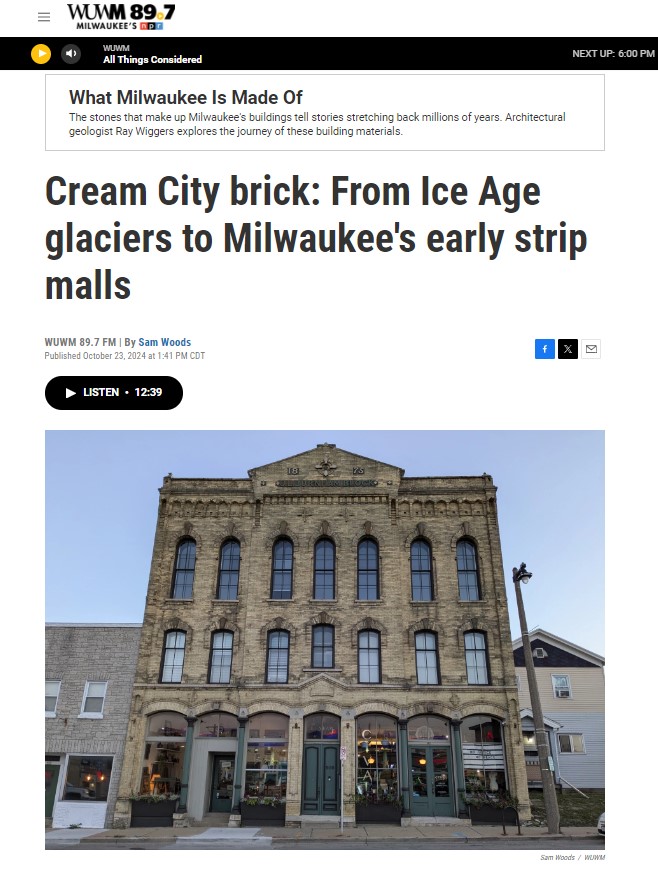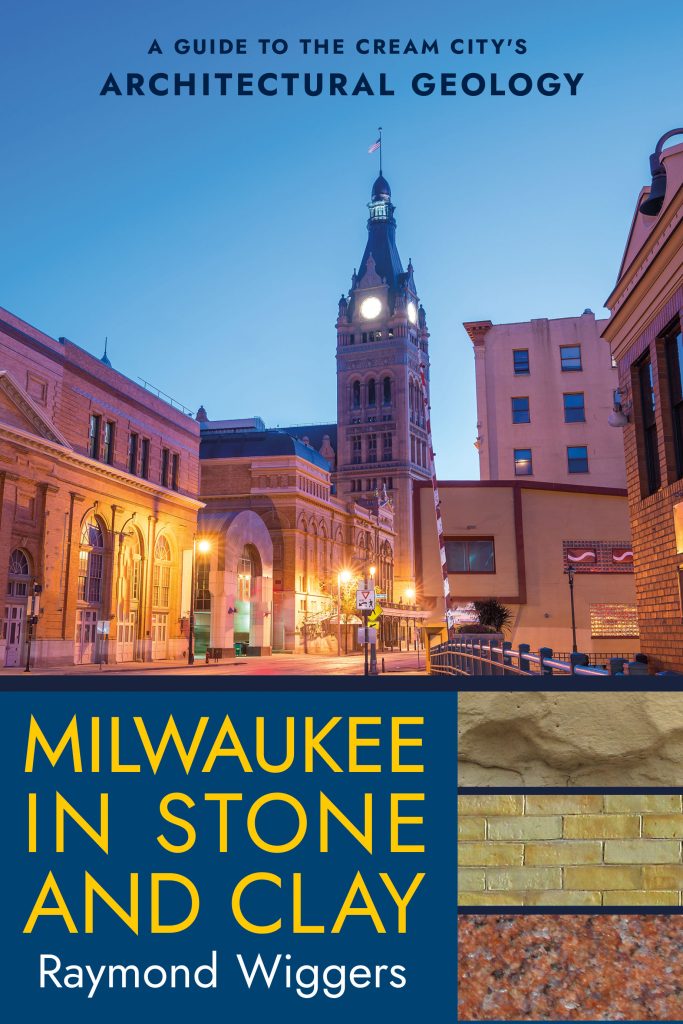
You can’t talk about the geology of Milwaukee’s built environment without first mentioning its two locally produced materials: Wauwatosa Dolostone and Cream City Brick.
This past September, in the first segment of the new “What Milwaukee Is Made Of” series airing on WUWM’s Lake Effect program, producer Sam Woods and I discussed the city’s native rock type and its use in the landmark Pfister Hotel.
And just this past week, on October 23rd, the series’ second part, on the brick that lent its name to the Cream City, was featured on Lake Effect. This time around we chose to focus on a different type of structure in a distinctly dissimilar neighborhood—the 1875 J. L. Burnham Block, in heavily industrialized Walker’s Point. Why? Because the Burnham Block has the most direct connection with the city’s once-vast brickmaking industry. The building’s original owner, John Burnham, was a prominent member of a family renowned for its ownership of leading Cream City Brick production firms. In fact, his own claypits and kilns were situated just a few blocks northwest of this location.
Some of Milwaukee’s most famous Cream City Brick buildings have been restored to their original pristine, pale-yellow state. But others, like this site, still wear a considerable deposit of soot, mostly produced before the passage of the federal Clean Air Act (1970, with later provisions). In the course of our discussion of this grimy aspect of the city’s architectural history, I utter a shocking heresy that is bound to offend all true lovers of tidiness and good order. You are duly forewarned . . .
If you didn’t catch the original airing of this installment, with its heresy and all else, you can enjoy both it and the first episode it at your convenience. Simply click on this Milwaukee Public Radio link.

And don’t forget that the one best way to get a synoptic view of Milwaukee’s urban geology is get your own print or digital copy of Milwaukee in Stone and Clay. It’s available in your local bookstore and online, including at the publisher’s website.

